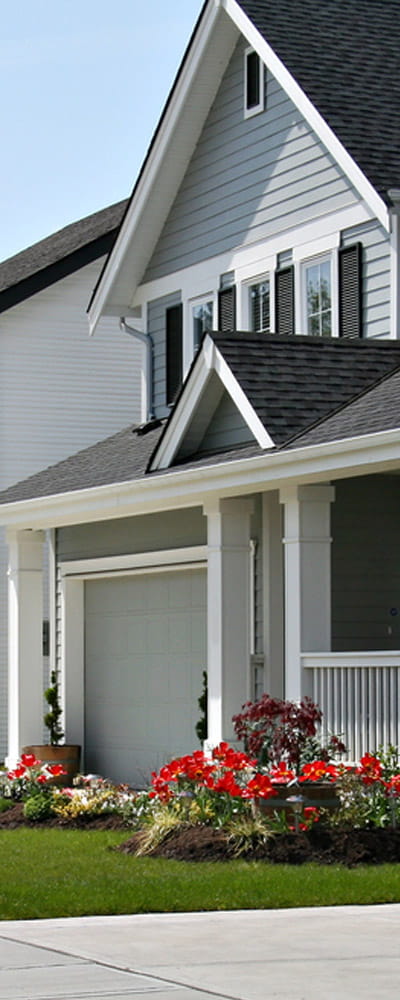
Homeowners associations are typically only responsible for insuring the common assets and amenities of the community, while the residents insure their homes separately. Some HOAs may only have an entrance monument and small plot of common ground, while others have many amenities such as pools, walking trails, dog parks, tennis and pickleball courts, clubhouses, and much more as you add more amenities and assets, the insurance and risk management program can grow more complex.
Common coverage considerations for homeowners associations may include:
Master Property Policy
Every homeowners association should maintain an inventory of insurable assets, especially for larger communities. Often, some common assets get overlooked—association-maintained streets and paved surfaces are an example. Often, the association’s governing documents will not provide a comprehensive list of insurable assets, so boards should work with a community association broker who can assist you with properly protecting the association’s property.
General Liability and Umbrella Liability Insurance
General liability insurance protects homeowners associations against claims of bodily injury or property damage occurring on common property or amenities. This coverage is vital in mitigating financial losses from lawsuits, including legal defense costs and settlements. Evaluate the need for increased liability coverage in the form of an umbrella policy to provide additional protection beyond the limits of primary policies, especially for associations with high-risk amenities or extensive common areas.
Directors & Officers (D&O) Insurance
D&O insurance protects board members and officers from personal financial losses resulting from alleged wrongful acts or decisions made in their official capacities. This coverage is crucial in safeguarding the personal assets of volunteers serving on the board. There is wide variation between D&O policies, and it’s critical that your association has broad coverage that picks up a variety of claims—from non-monetary damages to third-party discrimination.
Crime / Fidelity Bond Coverage
This coverage safeguards associations against financial losses resulting from fraudulent or dishonest acts committed by employees, board members, volunteers, and managers while handling association funds. Please note that most governing documents require this coverage, and nearly all lenders mandate that associations carry a crime limit no less than three months’ of dues, plus the total amount in your reserve accounts.
Worker’s Compensation Insurance
Worker’s compensation insurance will provide coverage for employees of the association as well as potentially protect against workplace injuries, financial support, and medical expense coverage in the event of an occurrence involving an employee or a contractor carrying inadequate or no worker’s compensation insurance. Even if you have no employees, the association may also consider implementing an “if any” type of policy to cover the acts of association volunteers and uninsured subcontractors.
Homeowners associations are typically only responsible for insuring the common assets and amenities of the community, while the residents insure their homes separately. Some HOAs may only have an entrance monument and small plot of common ground, while others have many amenities such as pools, walking trails, dog parks, tennis and pickleball courts, clubhouses, and much more as you add more amenities and assets, the insurance and risk management program can grow more complex.
Common coverage considerations for homeowners associations may include:
Master Property Policy
Every homeowners association should maintain an inventory of insurable assets, especially for larger communities. Often, some common assets get overlooked—association-maintained streets and paved surfaces are an example. Often, the association’s governing documents will not provide a comprehensive list of insurable assets, so boards should work with a community association broker who can assist you with properly protecting the association’s property.
General Liability and Umbrella Liability Insurance
General liability insurance protects homeowners associations against claims of bodily injury or property damage occurring on common property or amenities. This coverage is vital in mitigating financial losses from lawsuits, including legal defense costs and settlements. Evaluate the need for increased liability coverage in the form of an umbrella policy to provide additional protection beyond the limits of primary policies, especially for associations with high-risk amenities or extensive common areas.
Directors & Officers (D&O) Insurance
D&O insurance protects board members and officers from personal financial losses resulting from alleged wrongful acts or decisions made in their official capacities. This coverage is crucial in safeguarding the personal assets of volunteers serving on the board. There is wide variation between D&O policies, and it’s critical that your association has broad coverage that picks up a variety of claims—from non-monetary damages to third-party discrimination.
Crime / Fidelity Bond Coverage
This coverage safeguards associations against financial losses resulting from fraudulent or dishonest acts committed by employees, board members, volunteers, and managers while handling association funds. Please note that most governing documents require this coverage, and nearly all lenders mandate that associations carry a crime limit no less than three months’ of dues, plus the total amount in your reserve accounts.
Worker’s Compensation Insurance
Worker’s compensation insurance will provide coverage for employees of the association as well as potentially protect against workplace injuries, financial support, and medical expense coverage in the event of an occurrence involving an employee or a contractor carrying inadequate or no worker’s compensation insurance. Even if you have no employees, the association may also consider implementing an “if any” type of policy to cover the acts of association volunteers and uninsured subcontractors.
